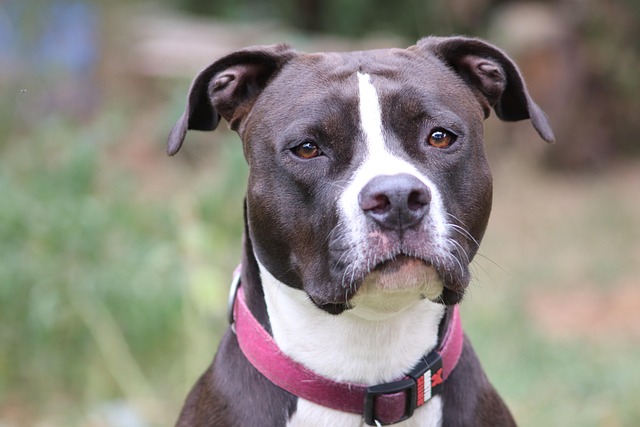
What are 5 common foods to feed dogs if they have an upset stomach
If you’ve ever watched your dog turn away from their food, then spend the next hour pacing and whimpering, you know the panic of an upset stomach.
Finding out your dog is expecting can fill your heart with joy—and a rush of questions. Caring for a pregnant pup means balancing excitement with careful preparation, ensuring both mom and her future puppies stay safe and healthy. Let’s dive into the key steps to navigate this special time, so you can support your furry family through every stage with confidence.
Start with nutrition. Pregnant dogs need more calories, but sudden changes can upset their stomach. Gradually increase high-quality puppy food—rich in protein and calcium—as her appetite grows, usually by the fourth week. Avoid overfeeding, though; excess weight strains her body. Always check with your vet before adding supplements, especially calcium tablets, which can disrupt natural balances if given too early or in the wrong dose.
Exercise remains important, but adjust the routine. Keep walks gentle and consistent, avoiding intense activities like jumping or rough play that could harm the puppies. A pregnant dog might tire faster, so let her set the pace. Indoor playtime with soft toys can help her stay active without risk, especially as her belly grows and mobility decreases in the final weeks.
Monitor her body closely. Weight gain should be steady—about 25-50% of her normal weight, depending on breed and litter size. Sudden weight loss or lack of appetite could signal problems like infections or pregnancy complications. Look for physical changes too: nipples will darken and swell, and her abdomen will expand gradually. Any discharge with odor, excessive panting, or signs of pain need immediate veterinary attention.
Regular vet visits are non-negotiable. Your vet will confirm the pregnancy via ultrasound or X-ray (usually after 25 days), check for fetal health, and discuss a due date. Vaccinations? Avoid most during pregnancy, as some vaccines pose risks to developing puppies. Follow your vet’s schedule strictly—skipping prenatal care isn’t just risky for mom; in many places, neglecting animal health can violate local animal welfare laws.
 Create a safe space for whelping. Set up a quiet, warm nesting area with washable bedding, away from foot traffic. Include a low-sided box she can climb into easily, as her instincts will drive her to seek a secure spot near the end of pregnancy. Keep the area stocked with clean towels, scissors (for umbilical cords), and a heating pad set on low to maintain steady warmth for newborns.
Create a safe space for whelping. Set up a quiet, warm nesting area with washable bedding, away from foot traffic. Include a low-sided box she can climb into easily, as her instincts will drive her to seek a secure spot near the end of pregnancy. Keep the area stocked with clean towels, scissors (for umbilical cords), and a heating pad set on low to maintain steady warmth for newborns.
Watch for signs of labor. Appetite loss, restlessness, and nesting behaviors usually start 24 hours before delivery. Her body temperature will drop below 100°F (37.8°C), and she may pant or dig at the bedding. If active labor doesn’t begin within 2 hours of strong contractions, or if she strains without progress, contact your vet immediately—delays can lead to emergencies, and timely care is critical under most animal protection regulations.
Postpartum care is just as vital. Ensure mom has easy access to fresh water and nutrient-dense food to support milk production. Puppies should nurse within the first hour; if any struggle, gently guide them to the nipples. Monitor the mother for signs of infection, like fever or foul-smelling discharge, and keep the whelping area clean to prevent bacterial growth. Remember, spaying after weaning is a common practice in many regions to control pet overpopulation—check local laws on responsible breeding to stay compliant.
Cultural notes matter too. In areas where home breeding is regulated, ensure you have any required permits and avoid practices that could be seen as unethical, like separating puppies from mom before 8 weeks old, which is standard for social and health reasons. Respect the bond between mother and pups, allowing them uninterrupted time to nurse and bond—this builds healthier, more well-adjusted puppies.
Trust your instincts as a pet parent. Every dog’s pregnancy is unique, and while guidelines help, your observation of her comfort and behavior is key. Keep a journal of weight, appetite changes, and vet visits to track progress. And remember: the love and care you pour into these weeks pay off in the joy of healthy puppies and a happy mom, ready to return to her playful self once her maternal duties ease.
Pregnancy is a miracle, but it’s also a period of responsibility. By staying proactive, partnering with your vet, and creating a nurturing environment, you’ll help your dog navigate this journey with ease.

If you’ve ever watched your dog turn away from their food, then spend the next hour pacing and whimpering, you know the panic of an upset stomach.

If you’ve ever cleaned up diarrhea or watched your dog vomit after meals, only to feel helpless as they refuse their next bowl of food, you know the stress of a sensitive stomach.

If you’ve ever stared at the ingredient list on your dog’s kibble, wondering what “meat by-products” really are, you’re not alone. New dog owners

If you’ve ever noticed your dog suddenly shaking their head like a wet towel, or pawing at their ear until it’s red and sore, you might’ve wondered if they’re just being “naughty.”

Finding worms in your dog’s stool or noticing them scooting uncomfortably across the floor is enough to make any pet owner’s heart sink.

If you’ve ever dreamed of having a dog but hesitated because your eyes water and nose runs around furry pets, you’re not alone.